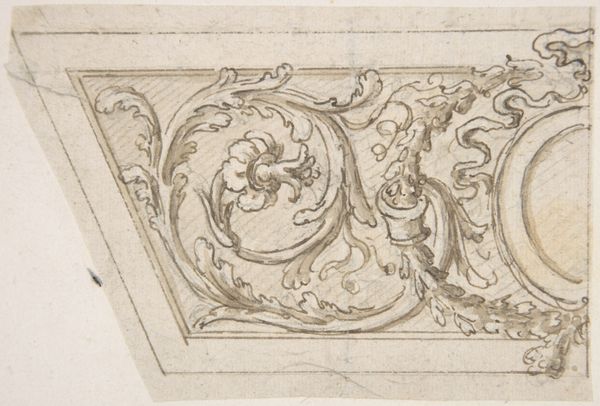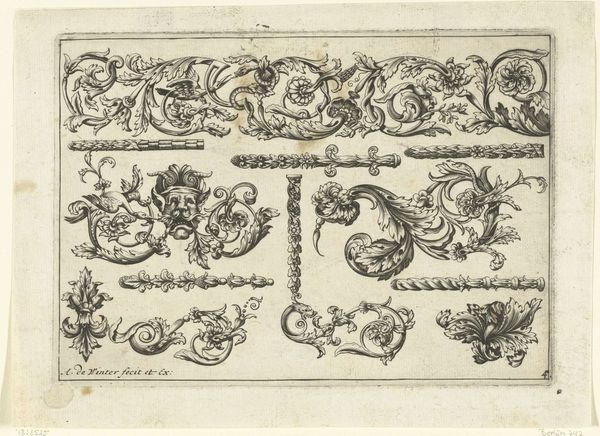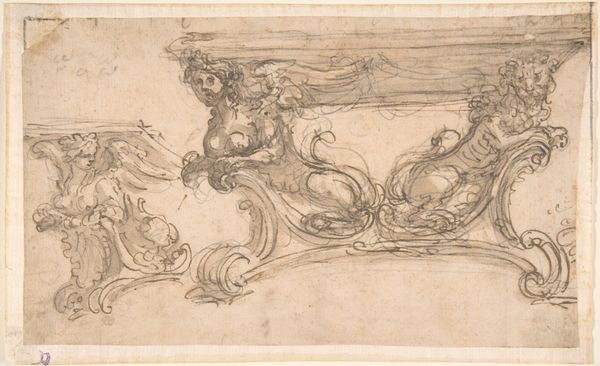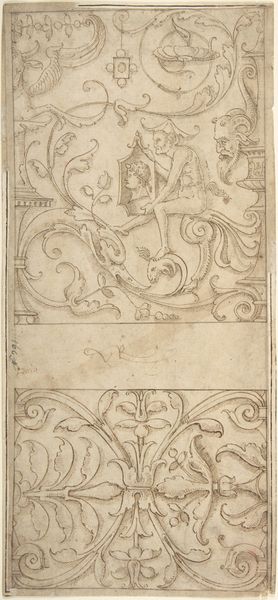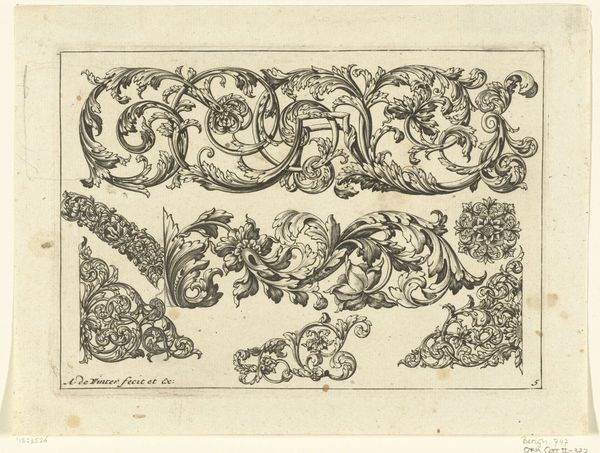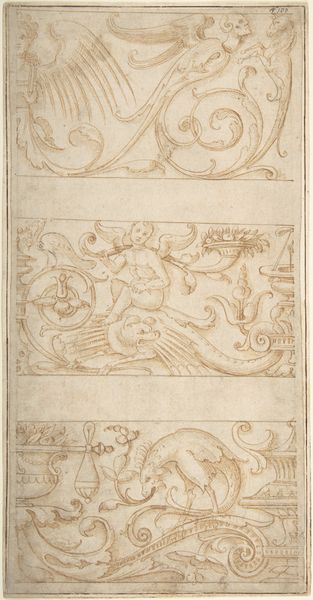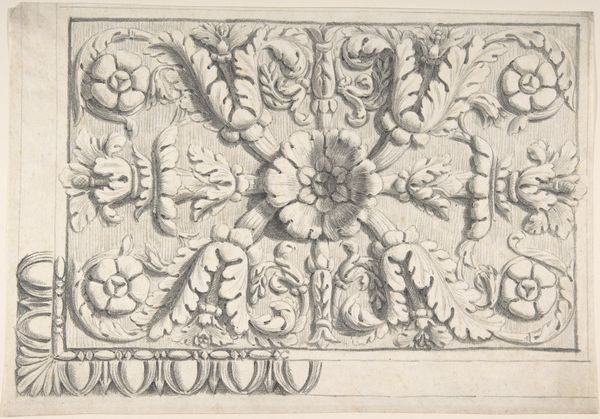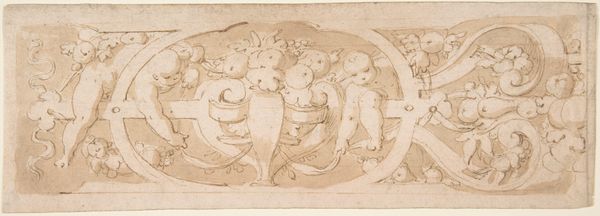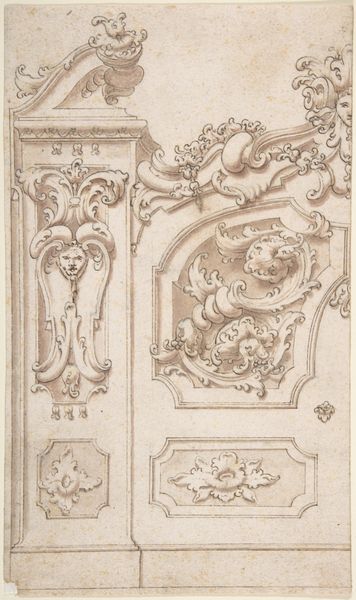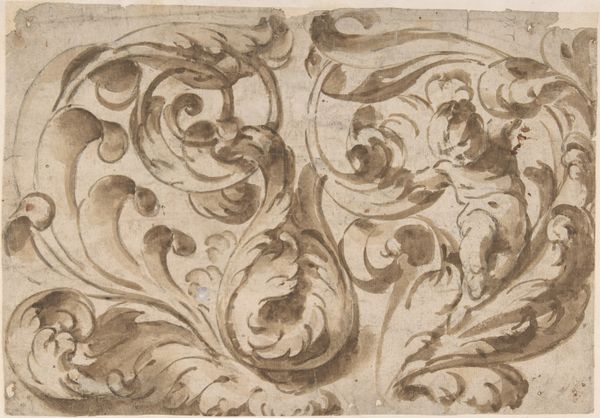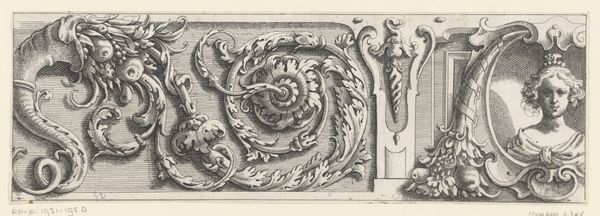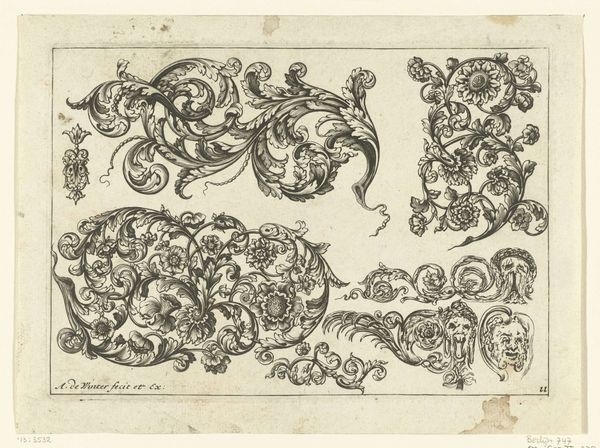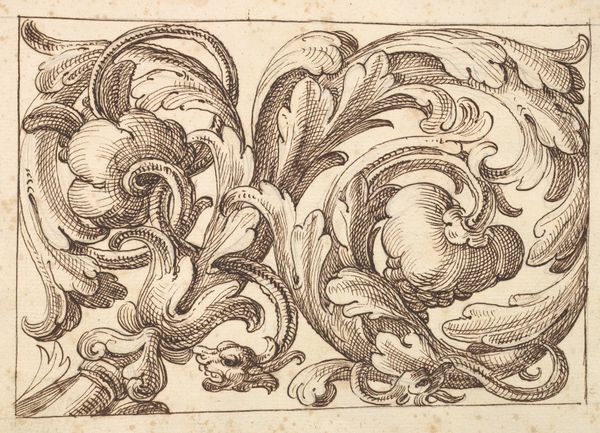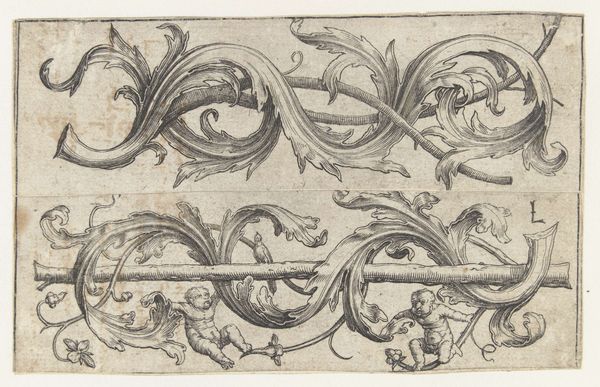
Dimensions: height 179 mm, width 241 mm
Copyright: Rijks Museum: Open Domain
Curator: This delicate pen drawing, dating from around 1770 to 1780, presents us with "Twee friezen met putti," or "Two Friezes with Putti." The artist remains anonymous. Editor: At first glance, it evokes a feeling of lightheartedness and classical elegance. The flowing lines and soft hues of the ink create a sense of airy grace. It feels ornamental. Curator: Absolutely. Let's consider these putti, or cherubic figures. They are prevalent symbols in Rococo art, representing love, innocence, and divine influence. The upper frieze depicts one clinging affectionately to what seems to be a female figure, likely a representation of Venus, further reinforcing themes of love and beauty. The fruit motifs might tie into this too, as abundance and fertility. Editor: The positioning of the putti seems particularly meaningful, evoking their role as mediators or messengers. Also, consider the continuous, unbroken flow of the vine and acanthus leaf patterns. Doesn't it suggest cultural memory, the endurance of classicism through visual forms? We see similar motifs repeated throughout the Neoclassical era and beyond. Curator: Indeed. And we should consider that visual continuity through an intersectional lens. While the symbols appear universal, the context—likely aristocratic commissions—highlights power dynamics and elite patronage. Were these symbols truly accessible to everyone, or did they reinforce social hierarchies? Editor: That's a crucial point. The idealized bodies and idyllic scenes certainly promoted particular notions of beauty and privilege. These representations can be seen as excluding others based on gender, class, and race. Curator: And the drawing itself as an intimate exploration, perhaps a study for a larger decorative project. The anonymity of the artist invites speculation. Were they constrained by social position from being acknowledged for their skill, or are we simply lacking records? These figures were often decorating aristocratic properties which excluded many groups of people Editor: Looking at this sketch has been like following a visual thread from antiquity, through Rococo's playful interpretations, all the way to our present-day reflections on art's role in reflecting and shaping society. Curator: Precisely! And reminds us to keep questioning whose voices are represented, and whose are not, within the historical record.
Comments
No comments
Be the first to comment and join the conversation on the ultimate creative platform.
